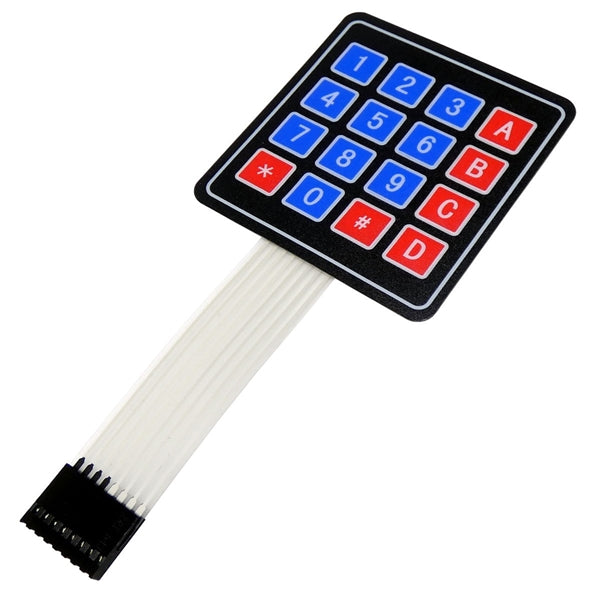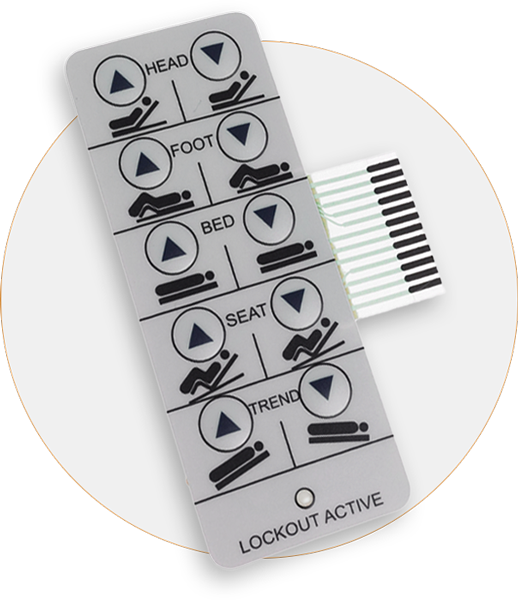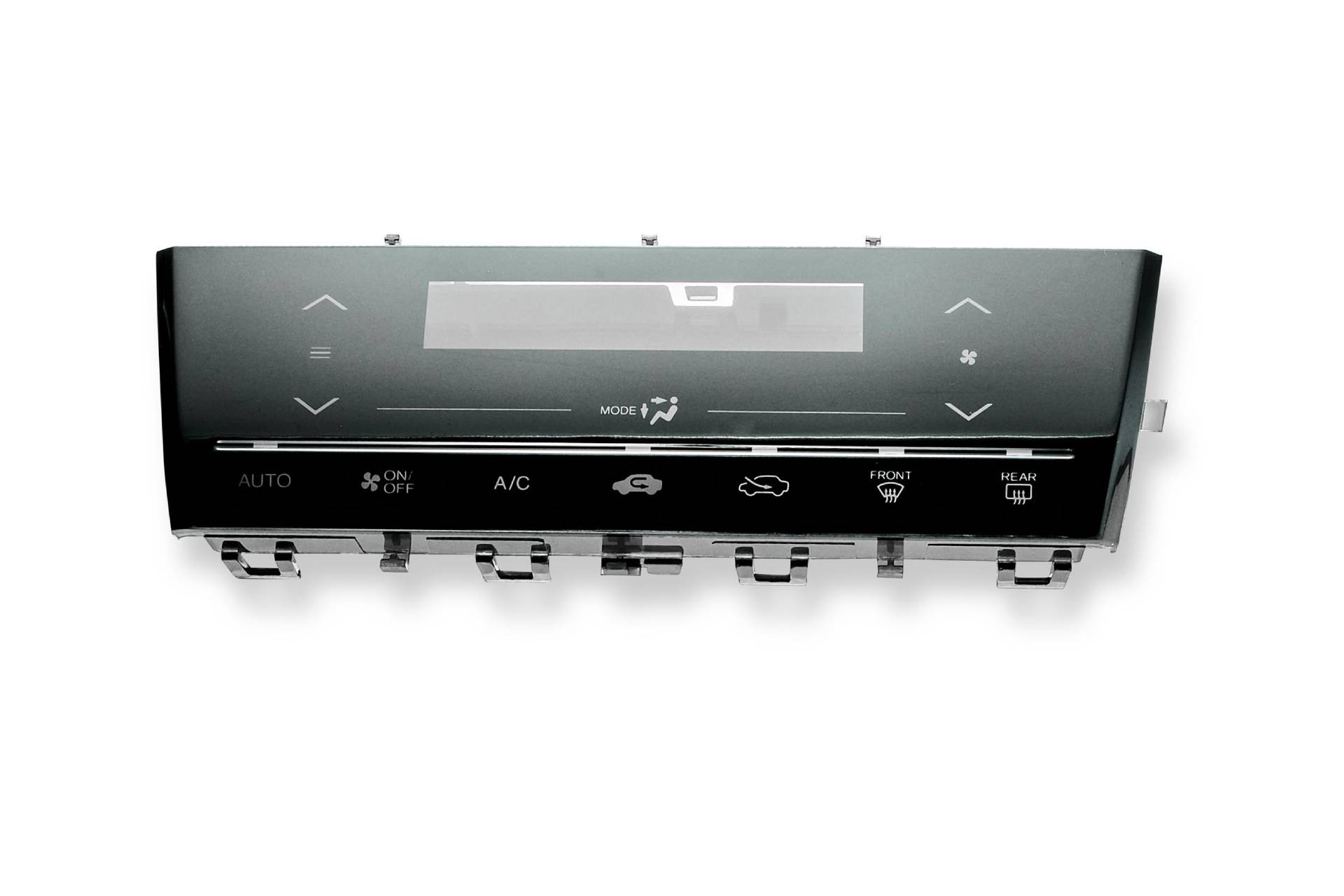What to Seek When Selecting a Membrane Switch Over for Your Project
When you're picking a membrane button for your task, a number of vital aspects enter into play. You'll require to believe about the materials, style, and just how well it lines up with your brand name. Sturdiness and use are necessary, yet so is the reputation of the producer. Comprehending these aspects can assist you make an informed decision-- one that stabilizes high quality and expense properly. Allow's explore what you should consider to ensure your choice fulfills all your job requires.
Understanding Membrane Switch Components
When you dive right into the world of membrane buttons, it's necessary to grasp the crucial parts that make them operate. Under that, the spacer layer guarantees there's enough distance between the circuit and the overlay, enabling the button to activate without continuous pressure.
The circuit layer, often made from printed conductive inks, creates the electrical pathways. When you press a switch, the circuit shuts, sending out a signal to the gadget. Understanding just how these layers collaborate aids you choose a membrane layer button that's dependable and fits your project demands. Pay very close attention to the thickness and material of each layer, as these elements influence resilience and capability in different settings.
Product Selection and Its Impact
Picking the best products for your membrane button can greatly affect its efficiency and long life. The choice of substratum, commonly polyester or polycarbonate, influences longevity and adaptability. Polyester is more abrasion-resistant, while polycarbonate uses better clearness and stamina.
Next, take into consideration the adhesive. It needs to withstand ecological elements like moisture and temperature level adjustments. A strong sticky guarantees that your membrane button remains undamaged over time.
Do not ignore the graphic overlay. The printing approach utilized, whether silkscreen or digital, affects the button's aesthetic appeals and longevity. Top quality inks will resist fading and damaging, preserving a specialist appearance.
Lastly, think of ecological problems. If your device will be subjected to severe chemicals or extreme temperatures, select materials developed to withstand these challenges. Your options in materials will inevitably figure out the button's reliability and customer complete satisfaction.
Layout Factors To Consider for User Experience
Picking the best materials lays the structure for an effective membrane layer switch, yet the style also plays a significant duty in user experience. You'll intend to reflect on how the design influences functionality (membrane switch manufacturer). Maintain switches and icons user-friendly and well-spaced, making it easy for customers to browse without confusion

Shade and comparison are likewise necessary; warranty that your style is aesthetically enticing but still functional. High contrast helps individuals easily recognize switches, especially in low-light conditions.
Finally, assess the general visual. A streamlined and modern-day design can elevate individual assumption and make your item a lot more attractive. Balancing functionality with an appealing style will result in a much better customer experience and inevitably, an extra effective product.

Environmental Factors and Resilience
When choosing a membrane switch, you need to consider just how it'll do in various settings. Elements like temperature resistance, moisture and chemical exposure, and mechanical wear can greatly affect its toughness. Understanding these elements will aid you choose a switch that takes on your certain conditions.
Temperature Resistance Needs
As ecological conditions can vary widely, recognizing temperature level resistance is vital for making sure the longevity of your membrane switch. You require to examine the temperature range in which your gadget will certainly run. High temperature levels can cause materials to degrade, resulting in failure, while low temperatures may make components breakable and susceptible to breaking. Make sure to examine the specifications of the materials used in the button, like the sticky and overlay, as they directly impact efficiency. It's likewise sensible to consider prospective temperature changes and their effects on the switch's reliability. By selecting a membrane switch with ample temperature level resistance, you'll enhance its life-span and keep performance in difficult environments. Pick wisely to stay clear of pricey substitutes down the line.

Dampness and Chemical Direct Exposure
Moisture and chemical direct exposure can substantially affect the efficiency and longevity of your membrane layer button, so it's essential to understand the atmosphere in which it will certainly be made use of. Always consult the maker's specs for chemical compatibility to guarantee your membrane layer switch keeps its capability over time. By prioritizing moisture and chemical resistance, you can improve the sturdiness of your switch in tough atmospheres.
Mechanical Deterioration
While you may focus on attributes like aesthetics and capability in your membrane layer button, mechanical wear and tear can considerably influence its performance over time. Constant pressing can lead to degradation of materials, causing problems like responsive comments loss or even switch over failing. Picking a long lasting button assurances durability and integrity, preventing expensive substitutes and downtime in your project.
Customization Options for Branding
When it involves branding your membrane layer switch, modification options are vital. You can select style elements and shades that reflect your brand, together with certain logo placement and size to boost presence. In addition, choosing the best products and structures can raise the overall appearance and really feel, making your item stick out.
Design Components and Shades
A variety of layout components and colors can make your membrane switch not simply useful yet likewise aesthetically attractive, boosting your brand identification. When choosing colors, think of your brand name's palette; they should reverberate with your audience and stimulate the appropriate feelings. You can likewise discover different coatings like matte or shiny browse around these guys to create different aesthetic effects. Do not ignore structures; including a responsive element can enhance user experience and make your button stick out. Consider incorporating customized graphics or patterns that align with your brand message. By thoughtfully selecting style components and colors, you not only produce an item that looks fantastic but likewise strengthens your branding consistently and properly.
Logo Placement and Size
After completing your layout components and shades, the next step is to concentrate on logo placement and size. Your logo is an essential aspect of your branding, so you'll want it to attract attention without overwhelming various other design components. Assess where your logo design will certainly be most visible and impactful; common positionings include the leading or center of the button.
Do not fail to remember to contemplate how the logo straightens with customer communication. This focus to detail will certainly improve both capability and brand identification in your task.
Material and Appearance Choices
Picking the appropriate products and textures for your membrane layer button can greatly boost both its functionality and aesthetic charm. You'll intend to evaluate choices like polyester or polycarbonate, as they offer longevity and resistance advice to put on. The texture of the surface likewise plays a vital role; smooth coatings offer a streamlined look, while textured surfaces can boost hold and responsive comments.
Personalizing the products and appearances permits you to reflect your brand name identity properly. You might select a matte finish to convey refinement or a glossy look for a contemporary touch. Don't neglect about color alternatives, as dynamic hues moved here can make your button stand apart, while low-key tones can produce a much more classy look
Expense vs. Quality: Locating the Right Equilibrium
When you're handling the alternatives for membrane switches, balancing cost and high quality can really feel overwhelming. A lower-cost button may save you money upfront, however if it endangers functionality, you could face greater substitute expenses later.
Try to find makers that supply a great mix of cost and high criteria. Research study their reputation and consumer evaluations to evaluate integrity. Sometimes, investing a little bit a lot more in quality materials can save you from future migraines.
Also, take into consideration the long-term efficiency and guarantee options. A a little much more expensive switch with a strong guarantee might prove to be a smarter investment. Inevitably, it's about discovering that wonderful area where you meet your budget plan while ensuring your job's success.
Evaluating and Quality Control Protocols
While you might locate the best membrane layer button layout, guaranteeing its quality through rigorous screening methods is crucial for long-lasting success. Start by verifying that the supplier follows sector criteria, such as IPC/WHMA-A -620, to guarantee a dependable item. membrane switch manufacturer. You'll want to look for comprehensive testing techniques, consisting of environmental, mechanical, and electrical evaluations
Ensure the buttons undertake toughness screening, simulating real-world usage to recognize any type of possible failures. Take note of the supplier's quality control process, which need to include regular inspections and audits.

Do not fail to remember to request for examples and perform your own tests to validate compatibility with your project. Finally, consider just how usually the supplier updates their protocols; advancement in testing can result in improved quality. By prioritizing these testing and high quality guarantee procedures, you'll enhance the possibility of an effective and durable membrane button for your application.
Regularly Asked Inquiries
For how long Does a Membrane Layer Switch Typically Last?
A membrane switch commonly lasts anywhere from 1 to 10 million cycles, depending on usage and environmental elements. You'll wish to take right into account your details demands to guarantee it fulfills your long life requirements efficiently.
Can Membrane Layer Switches Over Be Repaired if Damaged?
Yes, you can often fix membrane switches if they're harmed, yet it typically relies on the extent of the damage. Small problems may be fixable, while a lot more considerable damages normally calls for substitute for appropriate performance.
What Are the Typical Applications for Membrane Layer Switches?
Membrane buttons are commonly made use of in devices, medical devices, and automotive controls. You'll discover them in consumer electronics, commercial equipment, and also pc gaming consoles. Their flexibility makes them perfect for different interface and atmospheres.
Exist Particular Certifications for Membrane Layer Buttons?
Yes, there specify accreditations for membrane layer switches. Search for UL, CE, and RoHS qualifications to assure safety and security and compliance. These certifications suggest the button satisfies industry standards for high quality and ecological safety.
How Do I Guarantee Appropriate Installation of a Membrane Layer Switch Over?
To ensure correct setup of a membrane button, clean the surface area extensively, align it meticulously, and apply even stress. Follow supplier standards for adhesive curing time to make best use of resilience and performance.
Verdict
When choosing a membrane switch for your project, keep these key elements in mind: focus on durable products, emphasis on user-friendly design, and consider modification for your brand name. By very carefully assessing these aspects, you'll assure your membrane layer button not only satisfies your task needs however also enhances individual experience and reflects your brand identity successfully.